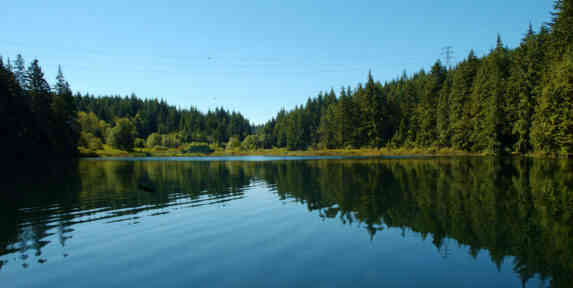A lake differs from a pond in that, unlike it, it is a natural reservoir, and not artificial. Most of the lakes are modest in size, but nevertheless have a significant impact on the adjacent territories, and in general on the hydrosphere. And there is no need to talk about such giants as Baikal!
Interesting facts about lakes
- The largest system of interconnected lakes on the planet — The Great Lakes in Canada.
- Lakes have been discovered on Titan, Saturn’s moon. True, they are by no means made of water (interesting facts about Saturn).
- The continent with the highest lake to land area ratio — North America, lakes there occupy about 1/50 of the total area.
- Finland is often called the country of lakes — here lakes occupy a little less than 10 percent of the territory of the entire state.
- The Yenisei River basin includes almost one hundred thousand lakes (interesting facts about the Yenisei River).
- The total volume of water in all the lakes of the Earth is about 0.013% of the total water on the planet.
- Lake Baikal — the largest fresh water body in the world.
- Scientists claim that lakes form in more than 70 different ways.
- The largest lake on Earth — The Caspian Sea, which from the point of view of science is a lake, not a sea (interesting facts about the seas).
- Baikal — the deepest lake in the world, its maximum depth is 1642 meters.
- There are lakes even in Antarctica, for example, Lake Vanda (interesting facts about Antarctica).
- The volume of water in Baikal is greater, than all five Canadian Great Lakes combined (interesting facts about Baikal).
- The highest lake in the world — located on the Chilean-Argentine border Ojos del Salado. Located at the top of the volcano, a small lake lies at an altitude of 6390 meters.
- Ocean fish live in another high mountain lake, Titicaca. How did they get there and how did they survive — still unsolved mystery.
- The lowest lake in the world — The Dead Sea, lying 417 meters below generally accepted sea level.
- Small lakes don’t live forever — on average, about a meter of precipitation accumulates on the lake floor over a thousand years, which sooner or later leads to the fact that the lake dries up or turns into a swamp.
- Lake Eyre, located in Australia, sometimes dries up completely, but after heavy rains it filled with water and occupies up to 15 thousand square kilometers.
- In the country of Palau there is Lake Jellyfish, which is home to about two million of these creatures (interesting facts about Palau).
- On the island of Kunashir there is Lake Boiling, the water temperature in which reaches 80 degrees.
- Lake Mogilnoye, on the Kola Peninsula, is unique in its kind — its water is divided into fresh, salty and moderately salty layers, and the water from these layers does not mix. All three layers are inhabited by different forms of life.
- The cleanest lake in the world — Mashu located in Japan. The transparency of its water reaches 40 meters.
- The only lake in the world in which sharks live is located in Nicaragua.
- On the island of Trinidad, located in the Caribbean Sea, there is a lake filled with liquid asphalt. The locals found a use for it — this asphalt is mined and laid on roads.
- In Bolivia there is a lake with red waters called Laguna Colorada. The reason for this unusual water color — billions of tiny microorganisms living in the lake.
- The reason for the pink color of the water of the Australian Lake Hillier has not yet been established. Another mystery of nature.
